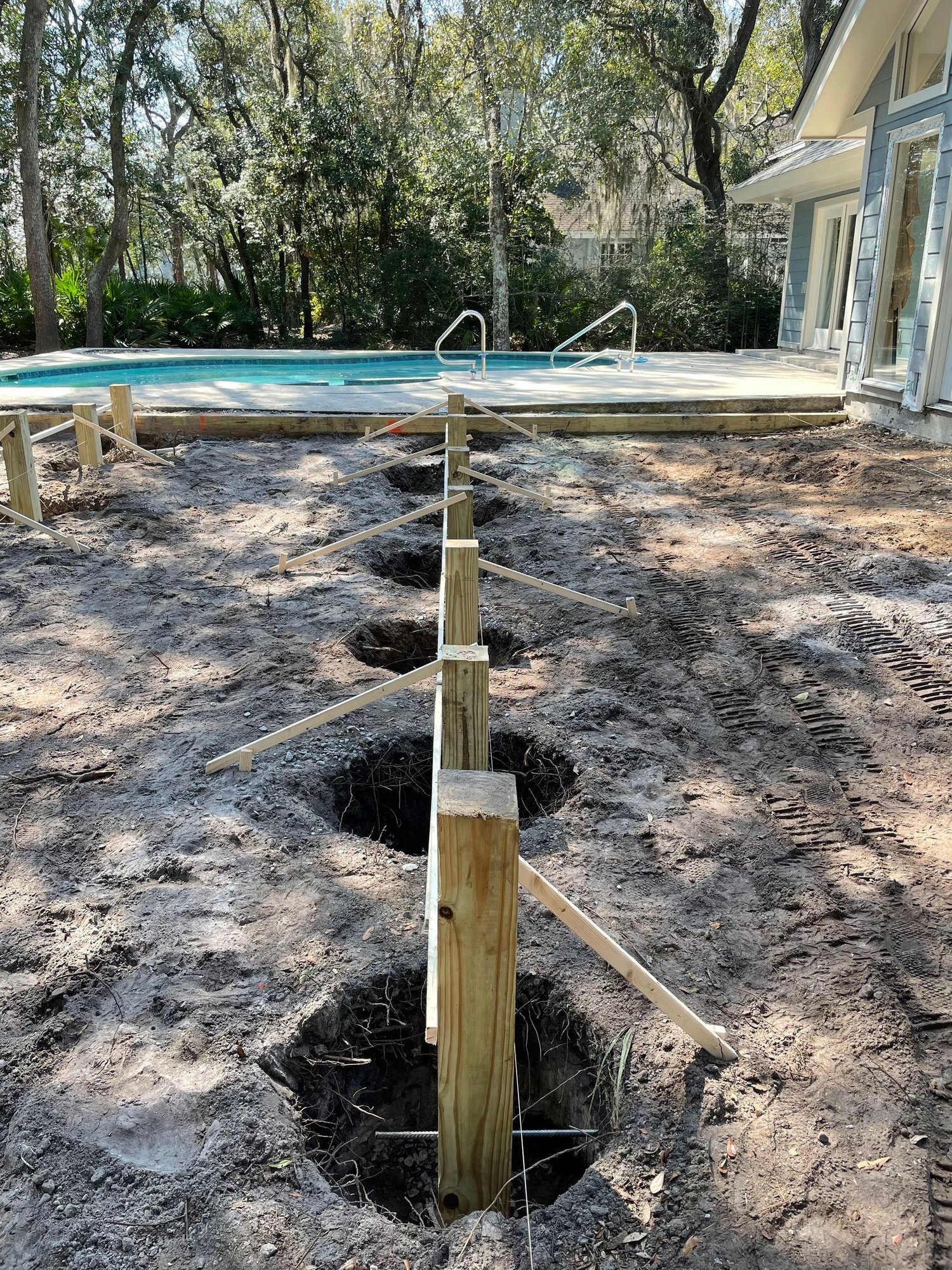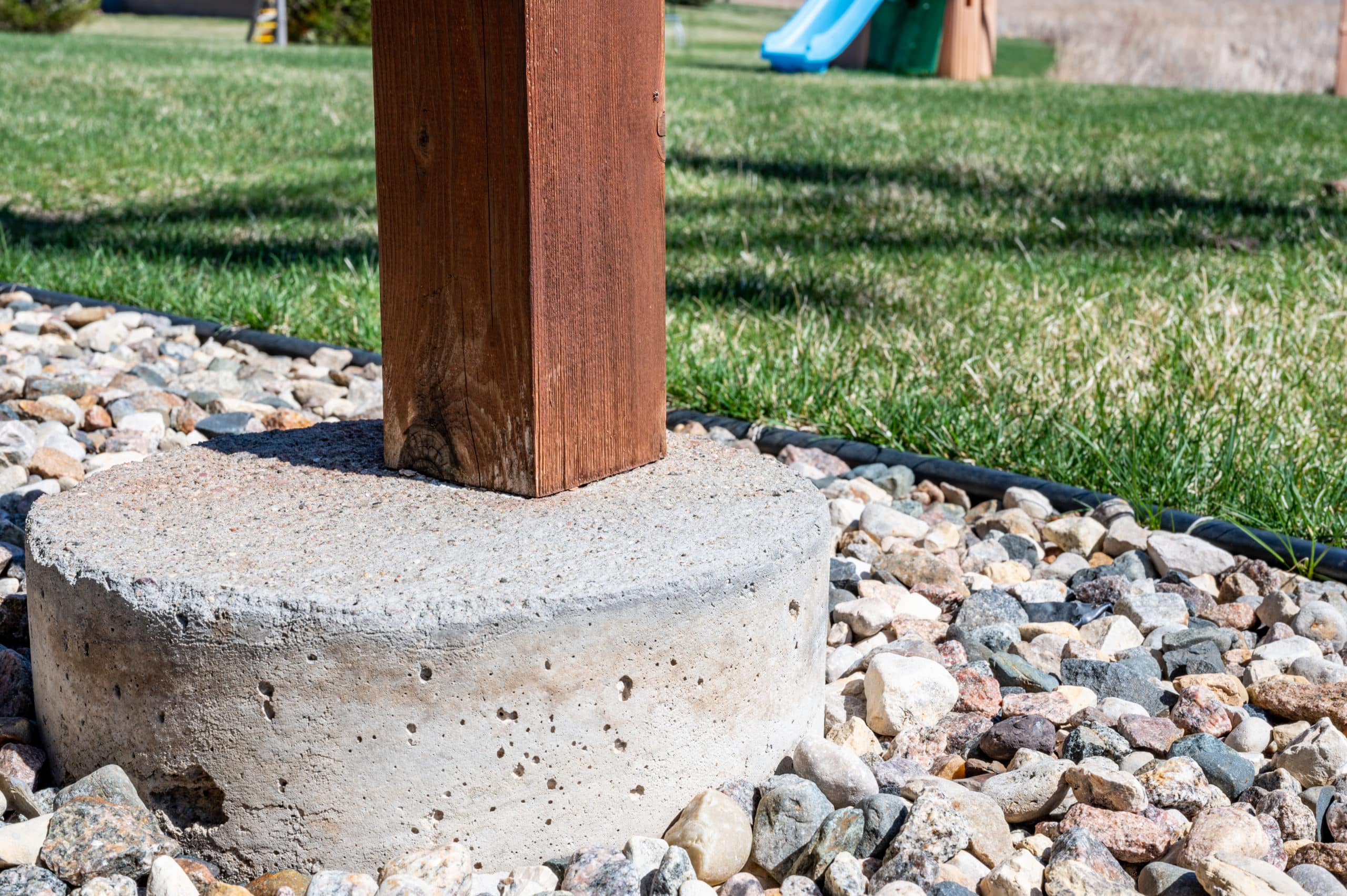Make Certain Stability and Long Life With Properly Mounted Deck Footings
Deck footings may not be the most glamorous element of deck building, but they play an essential role in ensuring stability and durability. In this conversation, we will certainly explore the significance of proper deck grounds, variables to think about throughout setup, various kinds of footings available, detailed setup overview, and maintenance suggestions for making certain lasting footings.

Value of Proper Deck Footings
Why are effectively mounted deck grounds critical for the security and long life of your deck? Deck grounds are the structure on which the deck relaxes, moving the tons from the deck to the ground.
To start with, effectively mounted deck grounds distribute the weight of the deck uniformly, stopping any type of unequal settling or sinking. This is particularly essential in areas with unsteady dirt, as it aids to alleviate the threat of the deck breaking down or moving. Additionally, well-installed grounds make sure that the deck stays level, preventing any kind of architectural damage that can occur when a deck comes to be unequal.
Secondly, properly mounted footings give a solid anchor for the deck, preventing too much motion and sway. This aids to preserve the structural honesty of the deck, decreasing the risk of injuries or crashes. It likewise reduces the damage on the deck, enabling it to endure the elements and normal use for a longer time period.
Aspects to Think About for Deck Footing Setup
When installing deck grounds, there are several vital aspects to consider for proper setup. These aspects can considerably influence the security and durability of your deck. You need to establish the type of soil on which the deck will certainly be built. Different dirt types have different load-bearing capabilities, so it is important to perform a dirt examination to guarantee the grounds can sustain the weight of the deck and its occupants. Furthermore, the area and layout of the deck ought to be meticulously planned to prevent any type of challenges such as trees, utility lines, or below ground pipes. It is also important to consider the local environment and weather conditions, as these can impact the durability of the grounds. For instance, regions with a high water table may need added actions to stop water damage. Last but not least, the dimension and material of the footings need to be chosen based on the size and weight of the deck, as well as the regional building regulations and policies. By taking into consideration these aspects, you can make sure the appropriate installment of deck grounds and appreciate a secure and long-lasting deck.
Types of Deck Grounds to Pick From
There are several various kinds of deck grounds offered for you to choose from. Each kind has its very own advantages and negative aspects, so it's crucial to consider your certain requirements and the problems of your deck before choosing.
One typical kind of deck footing is the concrete footing. This involves excavating openings in the ground and putting concrete into them to create a solid foundation. Concrete grounds are sturdy and give superb security, making them appropriate for decks in areas with challenging dirt problems or high wind tons.
Another choice is the helical pier footing, which consists of a steel shaft with helical plates that are screwed right into the ground. These grounds fast to install and can be made use of in different soil types, consisting of sandy or clay soils. They are also flexible, enabling simple progressing of the deck.
Sonotube footings are one more popular option. These footings are created by positioning a cardboard tube in a hole and loading it with concrete. Sonotube grounds are relatively very easy to set up and provide ample stability for smaller sized decks or in areas with much less demanding dirt problems.

When picking the sort of deck footing, it's important to take into consideration variables such as dirt problems, deck dimension and weight, neighborhood building regulations, and personal preferences. By picking the appropriate ground kind, you can make certain the security and long life of your deck.
Step-by-Step Overview for Setting Up Deck Footings

Identify the area: Begin by marking the specific position of each footing making use of stakes and string (Deck Footings). Take right into account any kind of local structure codes or regulations concerning trouble distances
Dig the holes: Utilize a post hole digger or an auger to dig the holes for the footings. Usually, a deepness of at the very least 36 inches is advised for security.
Degree the holes: Guarantee that all-time lows of the holes are level (Deck Footings). This can be achieved by utilizing a degree or a straight look here board throughout the top of the openings
Add gravel: Place a layer of gravel at the end of each opening to boost drainage and avoid the ground from penetrating the these details dirt with time.
Place the footing forms: Put the footing develops into the holes, ensuring they are centered and level. Use risks to safeguard them in position.
Mix and put concrete: Follow the instructions on the concrete mix bag to prepare the concrete. Put the concrete right into the ground types, loading them totally.
Smooth the surface: Utilize a trowel to smooth the surface of the concrete and get rid of any air pockets. Permit the concrete to heal according to the supplier's guidelines.
Upkeep Tips for Resilient Deck Grounds
Correct maintenance is crucial for making certain the durability and stability of deck grounds. By frequently inspecting and keeping your deck footings, you can protect against damages and prospective safety and security risks.
Normal cleaning is additionally vital for maintaining deck footings. Dust, debris, and vegetation can accumulate around the footings, which can bring about moisture buildup and decay. Cleansing the footings consistently, using a brush or a stress washer, can assist protect against these issues and prolong the life-span of your deck.
Along with cleaning, it is crucial to maintain the area around the footings free from any obstructions. Prevent piling things against the footings or permitting plants to grow too near to them. These blockages can catch wetness and create the grounds to deteriorate over time.
Finally, routine resealing of the grounds is advised to shield them from dampness and other environmental factors. Applying a waterproof sealant can go to this website help prevent water damage and extend the lifespan of the footings.
Final Thought
To conclude, correct setup of deck grounds is critical for ensuring stability and long life of your deck. Factors such as dirt kind, load capacity, and local building ordinance require to be taken into consideration when picking the appropriate kind of deck grounds. Complying with a detailed overview for setup and routine maintenance will help to guarantee the footings continue to be resilient and resilient.
In this discussion, we will certainly discover the value of proper deck grounds, variables to think about during installation, various types of footings readily available, step-by-step installation overview, and upkeep tips for ensuring durable grounds. Deck footings are the structure on which the deck rests, moving the tons from the deck to the ground.One typical type of deck footing is the concrete ground. Insert the footing forms: Place the ground creates into the openings, ensuring they are focused and degree.In verdict, correct setup of deck grounds is crucial for making certain stability and long life of your deck.